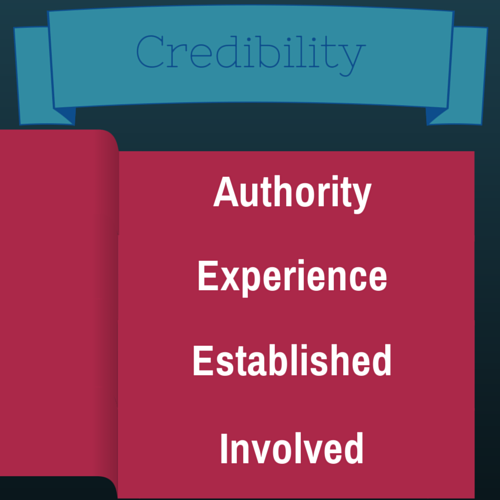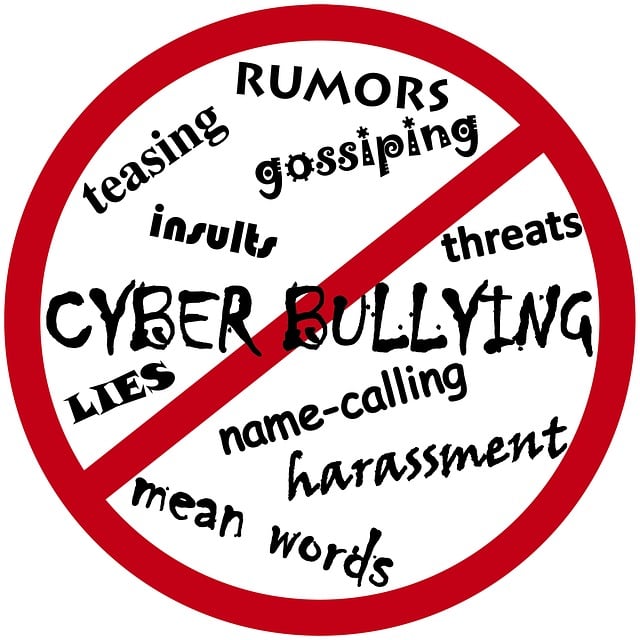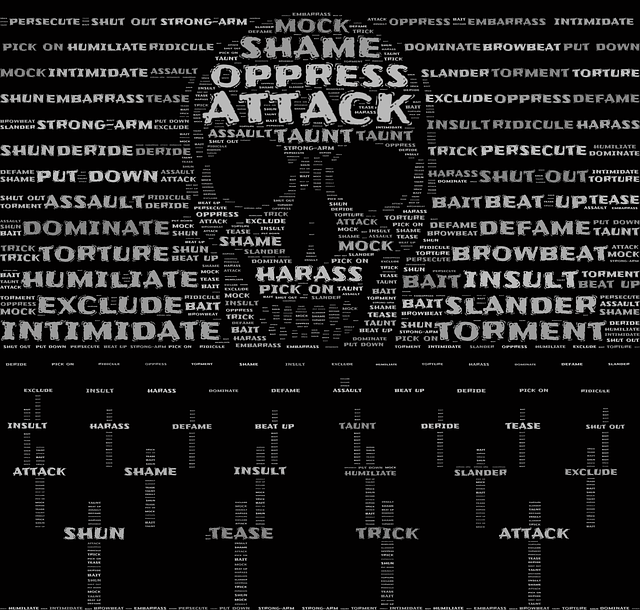You’ve decided to write a persuasive essay, and the topic you’ve chosen is cyber bullying—specifically, something should be done about it, but what?
The core, or the “guts,” of your essay should come from your own thoughts and views on the issue. To really make an impact, though, you should support your arguments with citations from credible outside sources.
What Makes a Source Credible?
Good question. Credibility (aka “believability”) can come from one of several factors:
- The source is a person or organization that is an authority on the issue. For our purposes, this could be school administrators, educators, psychologists, and so forth.
- The source is an established commentator. This could be a well-known opinion columnist, for example, or a newspaper byline. Such sources don’t have to be experts in a related field so much as having established authority and objectivity in the past.
- The source is someone with direct experience with the issue. This could easily be, for example, someone who has experienced cyber bullying first hand. (Check with your prof on this one, though. He might not accept an interview with your roommate as a credible research source. Your prof is more likely to prefer you summarize someone’s experiences as printed in an already published source.)
- The source is a person or organization that will be directly involved in this issue, now or in the future—for example, law enforcement or legislators.

Still not sure what I mean? Let me give you some examples of what is not a credible source:
- Random Internet bloggers.
- People with obvious political biases or agendas (even if they’re major media figures).
- People with ulterior motives (thus lacking objectivity).
- Anyone who does not have a demonstrated authority to make credible statements.
Note: It’s acceptable to use non-authoritative sources that are highly persuasive, but it’s sort of like starting a campfire with gasoline. It might work, but it might blow up in your face.
Want a little more help determining whether sources are credible? Read How to Apply the CRAAP Test to Essay Sources.
If you have a pretty good sense of what makes a source credible but aren’t sure where to find credible outside sources, I’ve done a little bit of research for you. Here are 12 cyber bullying articles that you can use in your persuasive essay.
I’ve also included MLA 8 citations and APA citations for your convenience. (If you’re citing in APA format, remember to change the current date of access to the date you accessed the source, if relevant.)
3 Cyber Bullying Articles on the Definition of Cyber Bullying

So what the heck is cyber bullying? Is it being mean to computers? The following sources are important for establishing your definition of this phenomenon.
Cyber bullying article #1: Cyberbullying
This article not only contains a definition of cyber bullying, but also includes a discussion of its effects, signs of cyber bullying, and tips for parents to help their children who may be suffering from cyber bullying. Additionally, the article links to additional resources for parents, children, and teens.
The information in this article is published by The Nemours Center for Children’s Health Media. It’s part of The Nemours Foundation, “a nonprofit organization created by philanthropist Alfred I. duPont in 1936 and devoted to improving the health of children.”
MLA 8 Citation
“Cyberbullying.” KidsHealth. The Nemours Foundation, 2014, kidshealth.org/en/parents/cyberbullying.html.
APA Citation
Cyberbullying. (2014). Retrieved from http://kidshealth.org/en/parents /cyberbullying.html
Cyber bullying article #2: What Is Cyberbullying?
The U.S. Department of Health and Human Services provides a concise definition of the term: “Cyberbullying is bullying that takes place using electronic technology.”
It goes on to explain exactly what is meant by “electronic technology,” as well as gives a very good overview of the issue, including ideas for action. Much of the government’s concern is that bullying, in general, often involves illegal or criminal behavior. So definitions of such behavior are very important.
MLA 8 Citation
“What Is Cyberbullying.” StopBullying.gov. U.S. Department of Health & Human Services, www.stopbullying.gov/cyberbullying/what-is-it/.
APA Citation
What is cyberbullying. (n.d.). Retrieved from https://www.stopbullying.gov /cyberbullying/what-is-it/
Cyber bullying article #3: What Is Cyberbullying?
This article, published by the National Crime Prevention Council, defines cyber bullying, discusses the effects of cyber bullying, and offers resources for parents and teens.
MLA 8 Citation
“What Is Cyberbullying?” National Crime Prevention Council, www.ncpc.org/topics/cyberbullying/what-is-cyberbullying.
APA Citation
What is cyberbullying? (n.d.). Retrieved from http://www.ncpc.org/topics /cyberbullying/what-is-cyberbullying
3 Cyber Bullying Articles on Why People Cyber Bully
The reason it’s so important to understand the causes of cyber bullying in writing your persuasive essay is that you will need to decide whether to recommend treating its causes or its effects.
For instance, do you recommend counseling for potential bullies or for their eventual victims? Do you recommend social sanctions or punishment? The following articles will help you answer these questions.
Cyber bullying article #4: 8 Reasons Why Kids Cyberbully Others
The author, Sherri Gordon, gives a succinct list of reasons that cyber bullying takes place. Most noticeable is that the person who bullies others is trying to fit in.
Ever since our caveman days, bullying has reinforced one’s sense of “belonging” by ganging up on “outsiders.” And “belonging” is something that teenagers, in particular, desperately want.
Gordon also mentions a lack of empathy on the part of many cyber bullies. Empathy is something that, in general, develops relatively late in adolescents.
MLA 8 Citation
Gordon, Sherri. “8 Factors That Motivate Cyberbullies to Lash Out at Others.” Verywell, 30 Dec. 2016, www.verywell.com/reasons-why-kids-cyberbully-others-460553.
APA Citation
Gordon, S. (2016). 8 factors that motivate cyberbullies to lash out at others. Retrieved from https://www.verywell.com/reasons-why-kids-cyberbully-others-460553
Cyber bullying article #5: Why Do People Cyberbully?
DeleteCyberbullying.org is a website that describes itself as “A Stop Online Harassment Project.” It’s devoted to finding both the origins of and the cure for cyber bullying.
In addition to mentioning some of the same causes of the problem as Gordon, above, the website mentions the anonymity of the Internet as a causal factor. Tied in with anonymity is the lack of any threat of retaliation, which encourages many cyber bullies—underlining the fact that bullying is a cowardly act.
MLA 8 Citation
“Why Do People Cyberbully?” DeleteCyberbullying.org, www.deletecyberbullying.org/why-do-people-cyberbully/.
APA Citation
Why do people cyberbully? (n.d.). Retrieved from http://www.deletecyberbullying.org/why-do-people-cyberbully/
Cyber bullying article #6: Why Do Kids Cyberbully Each Other?
This brief article examines the reasons kids cyber bully, such as anger, revenge, boredom, or frustration.
The STOP Cyberbullying website also links to a variety of additional articles that provide advice for dealing with bullies and advice on how to take a stand against cyber bullying.
MLA 8 Citation
“STOP Cyberbullying: Why Do Kids Cyberbully Each Other?” StopCyberbulling.org, WiredSafety.org, www.stopcyberbullying.org /why_do_kids_cyberbully_each_other.html.
APA Citation
STOP cyberbullying: Why do kids cyberbully each other? (n.d.). Retrieved from http://www.stopcyberbullying.org/why_do_kids_cyberbully_each_other.html
3 Cyber Bullying Articles on Treatments for Cyber Bullying
All of the following articles point out that, when recommending treatment for cyber bullying, it’s once again a matter of definition: what kind of treatment, and for whom?
Should the treatment focus on prevention or on dealing with the damage? In your persuasive essay, you’ll need to decide on your stance on these issues.
Cyber bullying article #7: Cyberbullying “Causes Suicidal Thoughts in Kids More Than Traditional Bullying”
David McNamee, a frequent contributor to Medical News Today, calls attention to one frightening aspect of cyber bullying: its victims are highly prone to having suicidal thoughts.
He quotes a study done in the Netherlands. The authors of the study speculated that the increased power of cyber bullying to make its victims suicidal was due to the widespread nature of the Internet.
Unlike traditional face-to-face bullying, cyber bullying material can be stored on a variety of online media, causing the victim to relive the experience again and again. This suggests that any treatment of cyber bullying should include monitoring the significant risk it creates of suicidal thoughts and actions in victims.
MLA 8 Citation
McNamee, Dave. “Cyberbullying ‘Causes Suicidal Thoughts in Kids More than Traditional Bullying.’” Medical News Today, MediLexicon International, 11 Mar. 2014, www.medicalnewstoday.com/articles/273788.php.
APA Citation
McNamee, D. (2014, March 11). Cyberbullying “causes suicidal thoughts in kids more than traditional bullying.” Medical News Today. Retrieved from http://www.medicalnewstoday.com/articles/273788.php
Cyber bullying article #8: Bullying and Cyberbullying: History, Statistics, Law, Prevention and Analysis
Bullying has been in existence for many years, and this journal article examines the history of the problem and how bullying expanded to include cyber bullying as technologies changed. It also includes suggestions for preventing cyber bullying.
MLA 8 Citation
Donegan, Richard. “Bullying and Cyberbullying: History, Statistics, Law, Prevention and Analysis.” The Elon Journal of Undergraduate Research in Communications, vol. 3, no. 1, pp. 33–42. www.elon.edu/docs/e-web/academics/communications/research/vol3no1/ 04doneganejspring12.pdf.
APA Citation
Donegan, R. (2012). Bullying and cyberbullying: History, statistics, law, prevention and analysis. The Elon Journal of Undergraduate Research in Communications, 3(1), 33-42. Retrieved from https://www.elon.edu/docs/ e-web/academics/communications/research/vol3no1/ 04doneganejspring12.pdf
Cyber bullying article #9: Social Media Cyber Bullying Linked to Teen Depression
This article is published by Scientific American, “the longest continuously published magazine in the U.S.” It highlights the fact that both those who cyberbully and those who are cyberbullied often experience higher rates of depression.
The article reviews several studies and stresses that these studies alone cannot prove that cyber bullying causes depression. It does, however, suggest that teens who suffer from depression are more likely to become victims of bullying than those who are not depressed.
MLA 8 Citation
Pappas, Stephanie. “Social Media Cyber Bullying Linked to Teen Depression.” Scientific American, 23 June 2015, www.scientificamerican.com/article /social-media-cyber-bullying-linked-to-teen-depression/.
APA Citation
Pappas, S. (2015, June 23). Social media cyber bullying linked to teen depression. Scientific American. Retrieved from https://www.scientificamerican.com/article/social-media-cyber-bullying-linked-to-teen-depression/
3 Cyber Bullying Articles on the Prevention of Cyber Bullying

Can we stop cyber bullying from happening in the first place? The following articles are helpful for defining a call to action. What should readers do about cyber bullying? How can they prevent it from happening?
Cyber bullying article #10: Cyberbullying: Intervention and Prevention Strategies
The authors of this article, Ted Feinberg and Nicole Robey, recommend a number of strategies to reduce the incidence and, particularly, the recurrence of cyber bullying.
For victims and parents of victims, the authors recommend recording the offending material, enlisting the help of authorities, contacting the attacker directly, and importantly, having an open environment in the home regarding computer and Internet use.
For educators, the authors recommend that a threat assessment be done and that anti-cyber bullying education be made a regular part of the curriculum.
MLA Citation
Feinberg, Ted, and Nicole Robey. “Cyberbullying: Intervention and Prevention Strategies” (Handout no. S4H15-1). Helping Children at Home and School III – Handouts for Families and Educators, edited by Andrea Canter et al., National Association of School Psychologists. Semantic Scholar, Allen Institute for Artificial Intelligence, pdfs.semanticscholar.org/d27d /47c9add136150ec0f96edcf08ade223e3d2b.pdf.
APA Citation
Feinbert, T., & Robey, N. (n.d.). Cyberbullying: Intervention and prevention strategies (Handout no. S4H15-1). In A. Canter, L. Paige, & S. Shaw, Helping Children at Home and School III – Handouts for Families and Educators. Retrieved from https://pdfs.semanticscholar.org /d27d/47c9add136150ec0f96edcf08ade223e3d2b.pdf
Cyber bullying article #11: Bullying and Cyberbullying Prevention Strategies and Resources
The Anti-Defamation League (ADL) is a famous and long-established organization that originally combated anti-Semitism. It has since expanded its reach to include opposing all forms of discrimination and defamation.
This website presents a collection of useful articles, many of which focus on preventative actions, such as Bullying Prevention and Intervention Tips for Schools and What Can be Done About Name-Calling and Bullying.
While many of these resources are aimed at preventing “traditional” bullying, the advice can be applied to cyber bullying as well. Below are citations for both the list of sources on the URL as a whole and an example with one of the articles available there.
MLA Citation (URL with list of resources)
“Bullying and Cyberbullying Prevention Strategies and Resources.” Anti-Defamation League, www.adl.org/education-outreach/bullying-cyberbullying/c/strategies-and-resources.html.
APA Citation (URL with list of resources)
Bullying and cyberbullying prevention strategies and resources. (n.d.). Retrieved from http://www.adl.org/education-outreach/bullying-cyberbullying/c/strategies-and-resources.html
MLA Citation (example PDF resource)
“Bullying Prevention and Intervention Tips for Schools.” Anti-Defamation League, www.adl.org/sites/default/files/documents/assets/pdf/education-outreach/Bullying-Prevention-and-Intervention-Tips-for-Schools-Institutions.pdf.
APA Citation (example PDF resource)
Bullying prevention and intervention tips for schools. (n.d.). Retrieved from https://www.adl.org/sites/default/files/documents/assets/pdf/education-outreach/Bullying-Prevention-and-Intervention-Tips-for-Schools-Institutions.pdf
Cyber bullying article #12: Cyberbullying: Resources for Intervention and Prevention
Published in the Universal Journal of Education Research, this article discusses cyber bullying and ways to combat it. It also includes an overview of prevention and intervention programs and the role schools play in preventing cyber bullying.
MLA Citation
Notar, Charles E., et al. “Cyberbullying: Resources for Intervention and Prevention.” Universal Journal of Educational Research, vol. 1, no. 3, 2013, pp. 133–45. ERIC Institute of Education Sciences, doi:10.13189/ujer.2013.010301.
APA Citation
Notar, C. E., Padgett, S., & Roden, J. (2013). Cyberbullying: Resources for intervention and prevention. Universal Journal of Educational Research, 1(3), 133-145. doi:10.13189/ujer.2013.010301
Putting It All Together
I’ve barely scratched the surface here. My goal was to give you a starting point for your own research. There are about 43 gazillion articles and websites out there on this topic. So I strongly suggest you make your search terms as specific as possible.
Once you dive in, remember that persuasive essays recommend action(s), and that to do so, you need to take into account, as well as point out, three things:
- What is the cost—in terms of money, effort, and time?
- Is it worth the effort? Will it solve or at least mitigate the problem, to an extent that justifies those costs?
- What about opportunity cost—the fact that, whatever we do, we could have been doing something else potentially useful instead (should resources spent combating cyber bullying be used elsewhere)?
If you need more help getting your arms around writing your persuasive essay, I recommend reading How to Create a Persuasive Essay Outline and checking out Persuasive Essay Writing Made Simple (Infographic).
If you need a little more help with finding resources, check out 5 Best Resources to Help with Writing a Research Paper.
Looking at these cyber bullying articles but need to write something other than a persuasive essay? Here are a few examples of other types of papers about the topic:
- Cause and effect essay: The Social Problem and Consequences of Cyberbullying
- Personal experience essay: Cyberbullying and My Experience with Bullying
- Problem/solution essay: A Study on Cyberbullying: The Role of Social Media Sites, Effects, Solutions, and Treatments
Looking for even more help? Why not send your paper to a Kibin editor for a little revision expertise?
Good luck!



